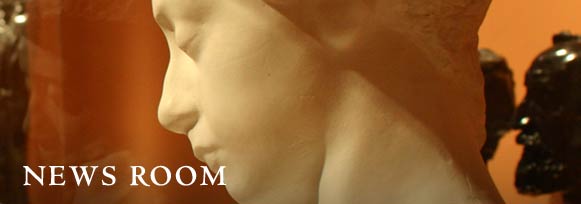Exhibition Combines Traditional African Figural Sculpture And Work By Cuban-Born Artist José Bedia
January 15– April 20, 2003
Stanford, CA, July 28, 2002—An exhibition that dynamically combines paintings by Cuban-born artist José Bedia and ancestral figures from the Democratic Republic of the Congo will open January 15 at the Iris & B. Gerald Cantor Center for Visual Arts at Stanford University. On the first day of the exhibition, Bedia will paint a 25-foot-long mural in the gallery. The following day, the artist will add sculptural and ritual elements to complete it, which will serve as the centerpiece for the show. The exhibition, entitled Nsila—El Camino: José Bedia and the Spirit's Path in Congo Art, will include three African sculptures from the Cantor Arts Center's collection and an additional nine works created by Bedia in his Miami studio in response to the African pieces. The exhibition, which is sponsored by the Halperin Endowment for Programs at the Cantor Arts Center, is open free to the public through April 20, 2003.
"Bedia's art will be, in part, an interpretation of the figures' journey from Africa to this museum gallery in America" explained Manuel Jordán Pérez, the Cantor Arts Center's Phyllis Wattis Curator of Arts of Africa, Oceania, and the Americas. "Crucial to this exercise is how the artist communicates the apparently missing spiritual essence that was once fully active and embodied in each African sculpture in the show. Bedia's project will allow the extraordinary paths of the African ancestral spirits to merge with his own and, by extension, ours."
"Nsila," a Cuban term derived from the central African "nzila" (also "jìla"), may be literally translated as a path, a road, or a journey. In religious or philosophical contexts, the term often relates to an extraordinary journey through a consequential path. Bedia's background, experience, and current life in exile from his homeland would suggest that he is engaged in such a journey.
José Bedia was initiated into the African Regla de Congo religion and formally trained as a visual artist in his native Cuba. His artistic journey is intertwined with intense interest in ancient belief systems, concepts of sacredness, spirituality, the world views of indigenous peoples and the art they create. Bedia's art, rich with symbolism, often makes reference to African cosmological principles, originally brought to the Americas with the slave trade.
In 1985, Bedia was sent to Angola to participate in the Cuban government¹s African military campaign. The artist considers the circumstances for his stay there disgraceful. However, he found a sense of peace in the Angolan people he encountered, and used the opportunity to better understand the roots of his own religious beliefs. Bedia left Cuba in 1990 for Mexico, later moving to Miami where he currently resides with relatives. In his continuing search for knowledge, Bedia has worked with various Native American communities; studied with a Lakota spiritual leader; and traveled to Mexico to visit Seri, Yaqui, Huichol, and other indigenous communities.
The public is invited to meet the artist on Saturday, January 18. At 1 p.m., Bedia will welcome the Spanish-speaking community to the exhibition, talk in his native tongue to visitors about his art and answer questions. The English-speaking public is invited to join him in the gallery at 3 p.m.
The exhibition is made possible by the Halperin Exhibitions Fund.



